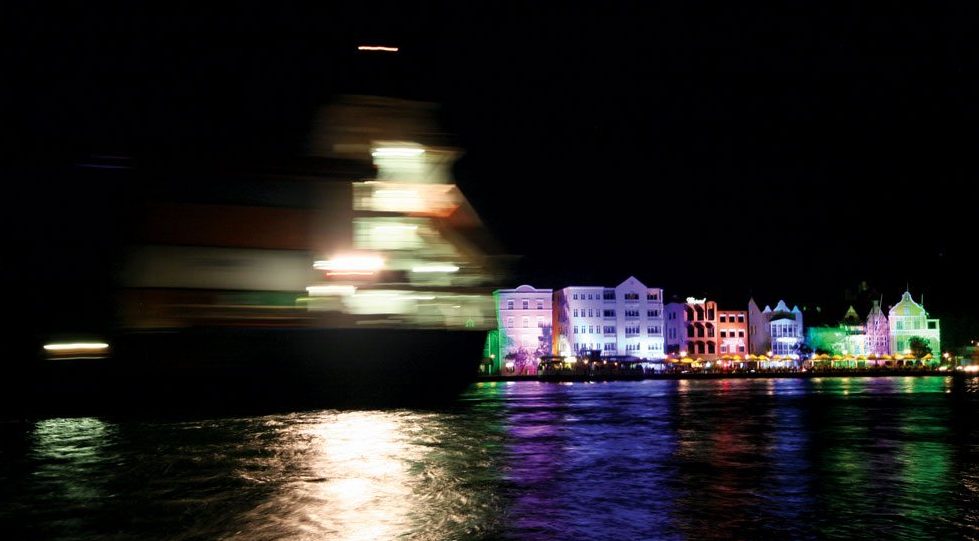
When sailing at night you get a unique perspective on the world. The stars seem more luminescent and much nearer, the wind seems stronger and you feel as if you are cocooned in your own little world. It is easy to believe in ancient gods and transient beings when you are alone on the deep ocean. But it can be wonderful as well. One night about a thousand miles from land we had fourteen porpoises swimming at the bow in phosphorescence that trailed miles behind us. It was truly magnificent.
BE PREPARED BEFORE DARKNESS FALLS
Prepare for night sailing long before darkness falls. You should try to get as many jobs as possible completed before dusk. For example, on a sailboat, make sure that the halyards are not tangled and that sails are organized below deck. If the wind is expected to strengthen, you might have a heavier or smaller sail at the top of your sail inventory. If you are cruising and want to change to a smaller sail, do so before twilight vanishes. Check while it is still light to see that you have adequate battery power to last the night. If you are low on power, recharge the batteries. You don’t want the on-watch to run the engine in the middle of the night and wake the off-watch. You might be the off-watch!
Before it gets dark make sure you know where the spare batteries, harnesses, lifejackets, and flashlights are. Also make sure that you have a good fix on nearby boats, that you have your lights on, and that you are proceeding at a prudent speed. Learn to recognize what lights other ships will be carrying. It’s not much use calling down the hatch to the off-watch to ask what a red and green light on each side of two vertical white lights, means. (It means that a ship over 150 feet long is heading directly at you!) If you are unsure, buy a book showing lights carried by shipping at night.
Make sure the VHFs are working properly and the VHF is handy to hail any shipping that seems to be getting too close. Have a spotlight handy, in case a large ship comes really close. As soon as twilight falls, turn on your navigation lights. Often the bow lights get immersed in spray or solid water and fail. Only by checking can you tell if they are working properly.
Before it is completely dark, take a walk around the boat and check that all the lights are working properly and that the AIS, radar detector (if you have one) and the radar are turned on. You might also want to make up a flask of soup or coffee, and put some cookies, candies, or sandwiches handy so that the on-watch don’t trash the galley looking for food when they get bored.

AT NIGHT LIGHTS CAN BE CONFUSING
If you are out at sea, looking toward the land can be very confusing. There are street lights, vehicle lights, navigation aid lights, store lights, and all manner of other distractions. Spotting a navigation light amid all the landside clutter is very difficult, but there are a few tricks that can help you.
- First, have a good idea where you are and where the nav-aid is expected to be. If you cannot see it flashing against all the lights behind it, look to one side of the light. Quite often your peripheral vision will pick up the flash before you can actually see the light when looking directly at it.
- Another trick is to get higher than the nav-aid. If you are looking for a buoy, quite often you can isolate it against the dark ocean by being on the highest part of your boat looking down toward the sea surface.
- Once you have located the nav-aid, time its flashes carefully using a stopwatch. Don’t try to count the flashes; you will usually get them wrong. On one trip the navigator came on deck and saw what he thought was the correct light. He timed it by counting, one, one thousand, two, one thousand, etc. We turned to head for the light, which seemed well below our course. The navigator went below. A few minutes later he yelled to come back on course. It would have been very difficult for us to get around the lighthouse that was several hundred yards inshore!
At night, always double-check your navigation. It seems to be much easier to screw up during the hours of darkness than during daylight. This is especially true when closing a shoreline.
Editor’s note: Part 1 of Sailing at Night can be found on our website: www.allatsea.net





